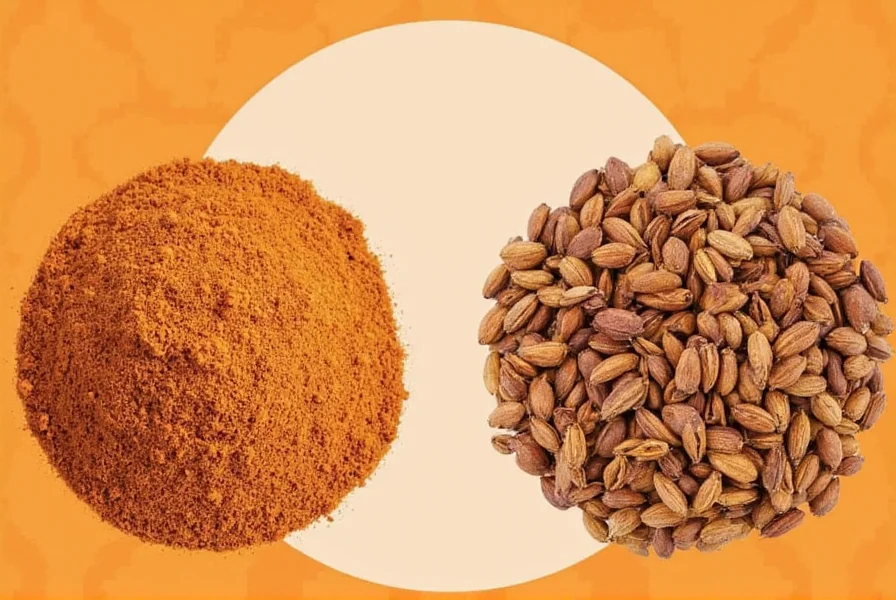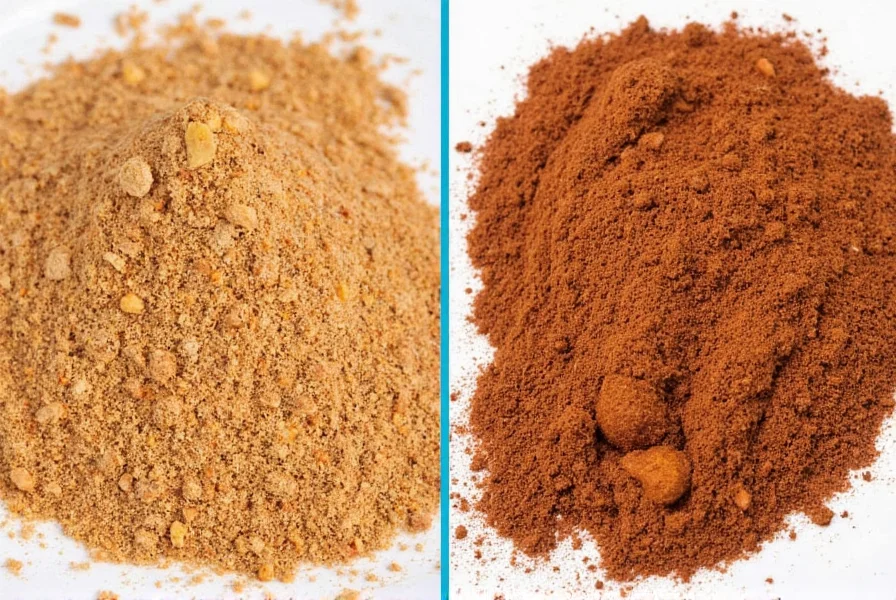For cinnamon rolls, Cassia cinnamon—especially Saigon or Vietnamese varieties—is the best choice for most home bakers. It delivers the bold, spicy-sweet flavor that defines classic cinnamon rolls, with affordability and wide availability. Ceylon cinnamon is a healthier alternative for those who prefer a milder taste, but it's less common and more expensive.
Not all cinnamons are created equal. The type you choose significantly impacts your cinnamon roll's flavor, texture, and safety. Here's what you need to know to make the perfect choice.
The Different Types of Cinnamon You Should Know
When it comes to cinnamon, there's more than one variety lurking on grocery store shelves. Here's a quick breakdown:
- Ceylon Cinnamon (True Cinnamon): Often called "true" cinnamon, this type comes from Sri Lanka and has a lighter, sweeter taste. It's less common but highly regarded among culinary experts.
- Cassia Cinnamon: This is the most commonly found cinnamon in North America. It's stronger, spicier, and slightly bitter if used in large amounts. There are different sub-types like Saigon, Korintje, and Indonesian Cassia.
- Other Varieties: You might also find variations like Malabar or Vietnamese cinnamon, but they're usually categorized under the broader Cassia family.
Key Differences Between Ceylon and Cassia
| Feature | Ceylon Cinnamon | Cassia Cinnamon |
|---|---|---|
| Taste | Sweet, delicate | Strong, spicy, slightly bitter |
| Color | Light tan to beige | Dark reddish-brown |
| Texture | Thin, brittle layers | Thicker, harder bark |
| Coumarin Content | Low | High |
| Price | More expensive | Affordable |
Cinnamon Showdown: Ceylon vs. Cassia
Let's get real: when it comes to cinnamon rolls, which cinnamon wins? Let's dive into the pros and cons of each type.
Ceylon Cinnamon – The Gourmet's Choice
Pros:
- Sweeter and more nuanced flavor profile
- Lower coumarin content (safer for frequent use)
- Lends a refined touch to artisanal baking
Cons:
- Harder to find in mainstream stores
- Expensive compared to Cassia
- Flavor may be too mild for traditional cinnamon roll lovers
Cassia Cinnamon – The Crowd-Pleaser
Pros:
- Strong, bold flavor perfect for cinnamon rolls
- Widely available and affordable
- Ideal for classic American-style recipes
Cons:
- Higher in coumarin (limit daily intake)
- Potentially overpowering if used in excess
- Less complex flavor than Ceylon

Buying Guide: How to Choose the Best Cinnamon for Cinnamon Rolls
Choosing the right cinnamon doesn't have to be a shot in the dark. Here's your ultimate guide to making an informed choice:
Step 1: Understand Your Needs
- Are you baking regularly? If yes, consider Ceylon for long-term health benefits.
- Do you prefer bold, punchy flavor? Then Cassia (especially Saigon) is your go-to.
- Is cost a factor? Stick with standard Cassia for budget-friendly options.
Step 2: Read Labels Carefully
- Check the packaging for the type of cinnamon listed—many products will specify "Ceylon" or "Cassia."
- Look for terms like "Vietnamese," "Indonesian," or "Saigon"—these usually indicate Cassia varieties.
- Avoid vague labels like "pure cinnamon" without specifying the origin or type.
Step 3: Choose Form Wisely
- Ground Cinnamon: Ready to use, ideal for mixing into fillings or frostings.
- Cinnamon Sticks: Great for infusing flavors into liquids, not ideal for cinnamon rolls unless ground yourself.
Step 4: Consider Organic & Fair Trade
- Opt for certified organic if avoiding pesticides.
- Fair trade options support sustainable farming practices and better wages for growers.
Step 5: Storage Matters
- Store cinnamon in an airtight container away from light and moisture.
- Ground cinnamon lasts up to 2 years; sticks can last up to 4 years.
Top 5 Cinnamon Picks for Perfect Cinnamon Rolls
Our top picks are based on expert reviews from culinary sources and user feedback from trusted baking communities. Whether you're a pro baker or weekend warrior, here's what we recommend:
| Product | Type | Best For | Features |
|---|---|---|---|
| Mrs. Dash Ground Cinnamon | Cassia | Classic home baking | Affordable, widely available, strong aroma |
| Frontier Co-op Ceylon Cinnamon Powder | Ceylon | Gourmet baking | Organic, low coumarin, smooth flavor |
| Simply Organic Ground Cinnamon | Cassia | Eco-conscious bakers | Organic, fair trade certified |
| Spice Islands Ground Cinnamon | Cassia | Daily baking needs | Budget-friendly, consistent flavor |
| Vietnam Saigon Cinnamon | Cassia | Intense cinnamon lovers | Superior sweetness and potency, ideal for rolls |
Pro Tips for Using Cinnamon in Your Rolls
Want to elevate your cinnamon roll game? Here are some insider tips from experienced bakers:
- Toast Your Cinnamon: Lightly toasting cinnamon in a dry skillet enhances its aromatic oils and deepens the flavor.
- Mix With Sugar: Combine cinnamon with brown sugar for a richer filling, or try a pinch of nutmeg for added complexity.
- Don't Skimp: Use at least 1–2 tablespoons per batch of rolls to ensure the cinnamon flavor shines through.
- Grind Your Own: Whole cinnamon sticks ground fresh offer a fresher, more potent flavor than pre-ground options.
- Pair With Butter: Cinnamon pairs beautifully with melted butter in the filling for a gooey, flavorful swirl.
Frequently Asked Questions About Cinnamon for Cinnamon Rolls
Here are answers to the most common questions people have about selecting and using cinnamon in cinnamon rolls:
What is the best type of cinnamon for cinnamon rolls?
For most home bakers, Cassia cinnamon—especially Saigon or Vietnamese—is considered the best for cinnamon rolls. Its robust flavor, bold spice, and affordability make it ideal for that classic, gooey treat. However, Ceylon cinnamon works well if you prefer a milder, sweeter flavor profile and are baking less frequently.
Is Ceylon or Cassia better for cinnamon rolls?
This depends on your taste preference. Cassia cinnamon has a stronger, more intense flavor that many associate with traditional cinnamon rolls. Ceylon cinnamon offers a sweeter, more delicate flavor that's great for a refined taste. Most professional recipes call for Cassia because of its bold flavor that stands out in the sweet pastry, but gourmet bakers sometimes prefer Ceylon for special occasions.
How much cinnamon should I use in cinnamon rolls?
Most recipes call for 1-3 tablespoons of cinnamon per batch of rolls. If you're using Cassia (which is stronger), 1-2 tablespoons is usually sufficient. For Ceylon (which is milder), you might need 2-3 tablespoons to achieve the same intensity. The key is to balance the cinnamon with your sugar mixture—typically a 1:4 ratio of cinnamon to brown sugar works well.
Can I substitute one type of cinnamon for another in cinnamon roll recipes?
Yes, but you'll need to adjust quantities. If substituting Ceylon for Cassia, use about 25-50% more Ceylon to achieve similar flavor intensity. If substituting Cassia for Ceylon, use about 25-50% less to avoid overpowering the rolls. Remember that Cassia has a higher coumarin content, so if you're baking frequently, you might want to use less Cassia for health reasons.
Does the type of cinnamon really make a difference in cinnamon rolls?
Absolutely. The type of cinnamon significantly impacts both flavor and texture. Cassia gives that familiar, bold, spicy-sweet taste most people associate with cinnamon rolls, while Ceylon offers a more subtle, citrusy-sweet flavor. The texture also differs—Ceylon is finer and more delicate, while Cassia has a more robust texture that holds up well in the filling.
Is Cassia cinnamon safe to use regularly in cinnamon rolls?
Cassia contains higher levels of coumarin, which in large amounts can be harmful to the liver. The European Food Safety Authority recommends no more than 0.1 mg of coumarin per kilogram of body weight daily. For most people, enjoying cinnamon rolls occasionally with Cassia is perfectly safe. If you bake cinnamon rolls frequently (multiple times per week), consider alternating with Ceylon, which has much lower coumarin levels.
How should I store cinnamon to keep it fresh for baking cinnamon rolls?
Store cinnamon in an airtight container in a cool, dark place away from heat and moisture. Ground cinnamon retains peak freshness for about 6-12 months, while cinnamon sticks can stay fresh for 2-4 years. For longest shelf life, consider storing in the freezer. Properly stored cinnamon will maintain its vibrant color and strong aroma, which are crucial for flavorful cinnamon rolls.
Can I use cinnamon sticks instead of ground cinnamon for cinnamon rolls?
While you can grind your own sticks, pre-ground cinnamon is generally preferred for cinnamon roll fillings because it distributes more evenly and creates a smoother texture. If using sticks, you'll need to grind them thoroughly in a spice grinder or with a mortar and pestle. Freshly ground cinnamon from high-quality sticks often has more intense flavor than pre-ground options, but the texture needs to be fine enough to spread easily on the dough.
Final Verdict: What's the Best Cinnamon for Cinnamon Rolls?
After analyzing professional baking recommendations and health guidelines, Cassia cinnamon—especially Saigon or Vietnamese varieties—remains the top choice for most home bakers. Its robust flavor profile delivers the classic cinnamon roll experience, while Ceylon is best reserved for special occasions or health-conscious bakers. Remember to use the right amount (1-2 tablespoons for Cassia), store it properly, and prioritize quality for perfect results every time.

Happy Baking!
Whether you're rolling out dough at midnight or whipping up a weekend batch, now you're armed with the knowledge to pick the perfect cinnamon. No more guesswork, no more bland rolls—just pure, spiced bliss.










 浙公网安备
33010002000092号
浙公网安备
33010002000092号 浙B2-20120091-4
浙B2-20120091-4